Grade 3- 3D Math Lesson Plan
December 5, 2022
In my first practicum, I taught 3D shapes to my grade 3 class. I prepared a diagnostic lesson that allowed students to express what they know about shapes. The students were able to use their prior knowledge to explain their understanding and engaged in interactive activities (3D shape hunt and neighbourhood building with 3D shapes). In my growth plan, I focus on learning how to make learning authentic in my classroom through assessment. Initially when students were filling out their 3D shape handout some where drawing or writing the actual shape rather than looking for an object in the classroom. At this time, I knew that I had to revisit my first lesson and restructure it so that it gave students the opportunity to dive deep into their prior knowledge about 3D shapes. I also modified the 3D shape hunt for my ELL students that were learning at the 2D level. I created a scaffolding experience with students in math where I was able to gradually release the level of responsibility from myself to my students. I seen growth in my ELL students that began with 2D shapes and were able at the end identify 3D shapes and their geometric properties. My goal as an educator is to continually participate in expanding my professional knowledge and not being afraid to make mistakes in my own learning. In doing so, my hope is that my own vulnerability will act as a guide to inspire and empower students in their education.
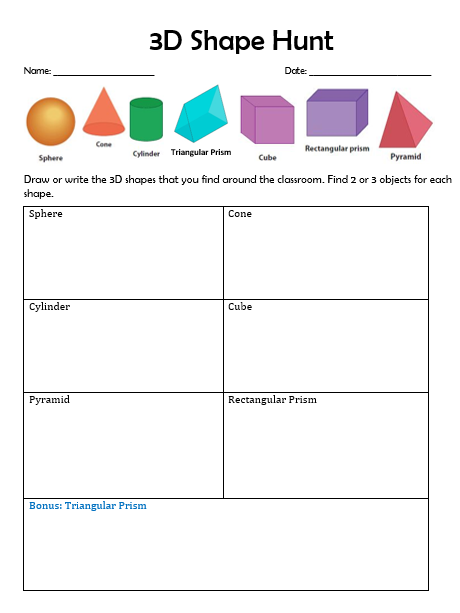
Learning objective: After learning about 2D and 3D shapes, students (in pairs) will illustrate 3D objects that they have found around the classroom. Partners are to find 5-6 3D shapes in 10 to 15 minutes.
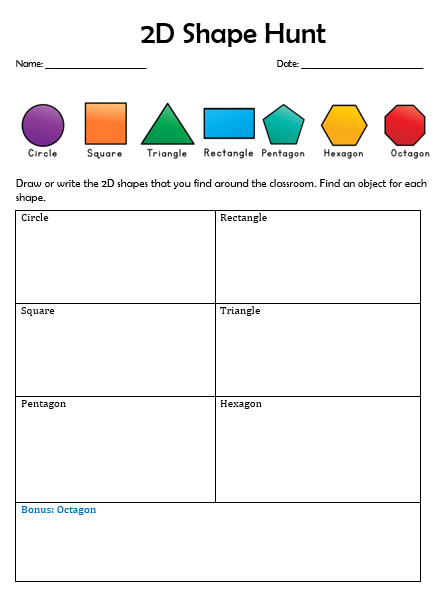
ELL Modification – 2D shape Hunt
Learning objective: After learning about 2D and 3D shapes, students (with LSST support) will illustrate 2D objects that they have found around the school. Students are to find 5-6 2D shapes in 10 to 15 minutes.
1-Minutes Music Lesson Video
March 10, 2023
I have developed a 1-minute music lesson video for Grade 1 that demonstrates my understanding of the Ontario Curriculum for The Arts and my developing expertise of the elements of music and music theory. I chose to focus my element of music lesson on pitch and how students can use their voice as an instrument to make high and low notes within pitch. In my teaching philosophy, I emphasize how student voice is a critical component in student learning and self development. Integrating music in the classroom, allows students to not only be creatively musically but as find their self-identity through what motivates and inspires them in their education.
Inquiry Task – Human Body (Grade 5)
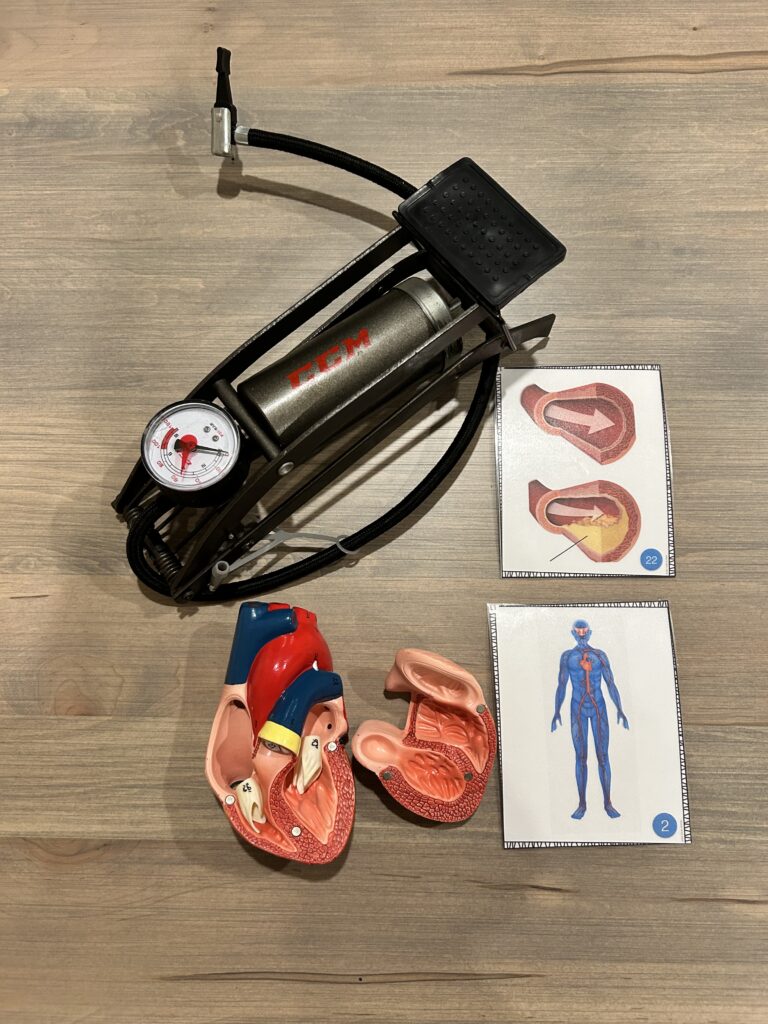
Student Voice in Planning
Educational philosophy and professional practice connection: Learning should be constructed through meaningful real-life experiences and through high critical thinking. I believe students need equal opportunities for success in their learning which is crucial in the way they access the lessons and materials, how they engage with it and how they demonstrate their learning and knowledge. Continuously being mindful of my professional practice especially on developing on teacher reflexivity to improve my assessments and involving students in their learning.
Inquiry process: each group received a human body system (circulatory, respiratory, nervous, digestive, and skeletal). As well, students received accompanying pictures of organs, diseases that can affect that body system (smokers lungs), and other issues that would spark open ended discussions for students such as, staying up at night (sleep deprivation and how it affects the brain). Students received pictures that represented the function of that particular human body system (e.g. motherboard and the brain both gather and sort information). Students received a see, think, and wonder page where they will explain what they physically see at their table groups, what they think the materials mean, and what they wonder about the materials/human organs.
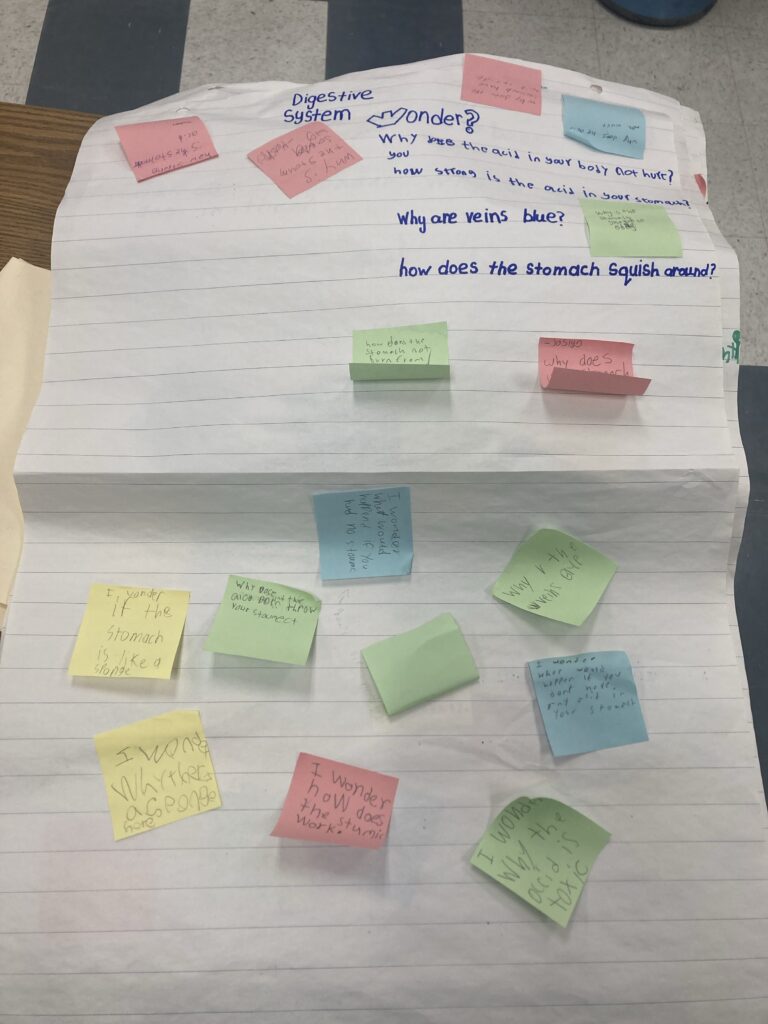
In their groups, students wrote down their wonder questions on a chart piece of paper. After questions were written down, students went on a gallery walk to each others human body systems. Students provided additional wonder questions onto the chart papers at each station.
Some questions students inquired about the respiratory system…
- I wonder what happens if the bronchioles in your lungs weren’t there?
- What do the lungs look like when you breathe?
- I wonder what would happen if you stop smoking/vaping?
- I wonder what would happen if you had one lung?
Assessment for/as: Diagnostic assessment where students prior knowledge on the human body is being assessed. As well, this task assisted my understanding of the questions the students were inquiring about within their learning.
Practicing Reflexivity through understanding how this inquiry task can be used to assess students Assessment of: This inquiry task could have also been given to the students at the end of the unit as a inquiry-based project (IBL).
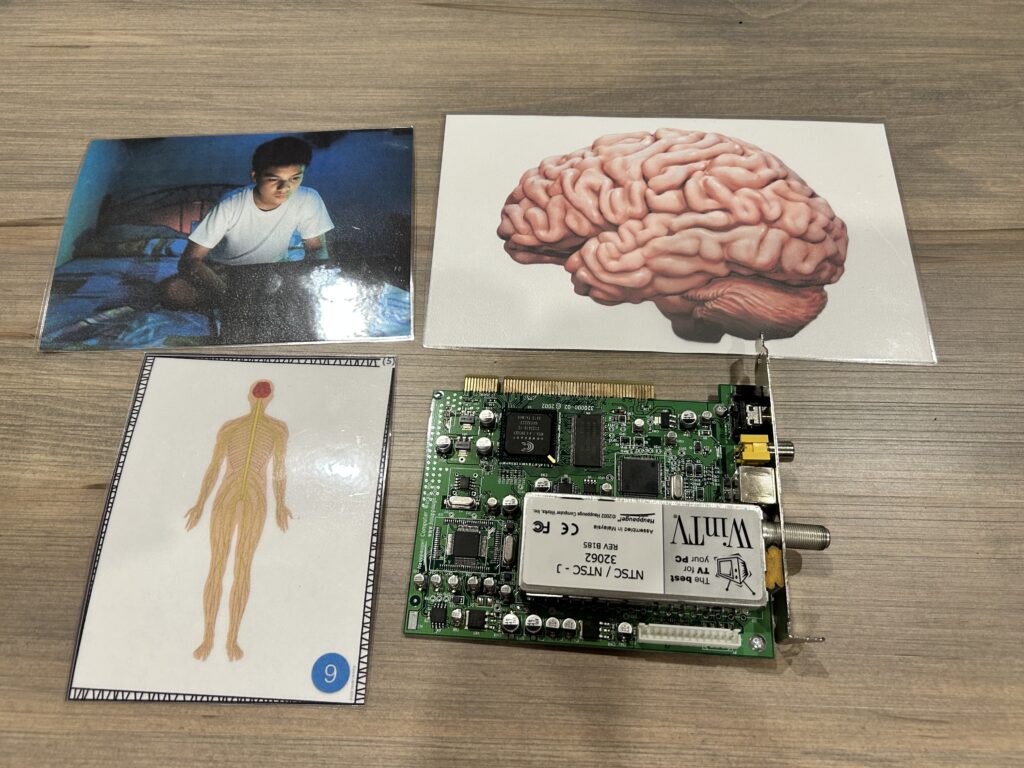
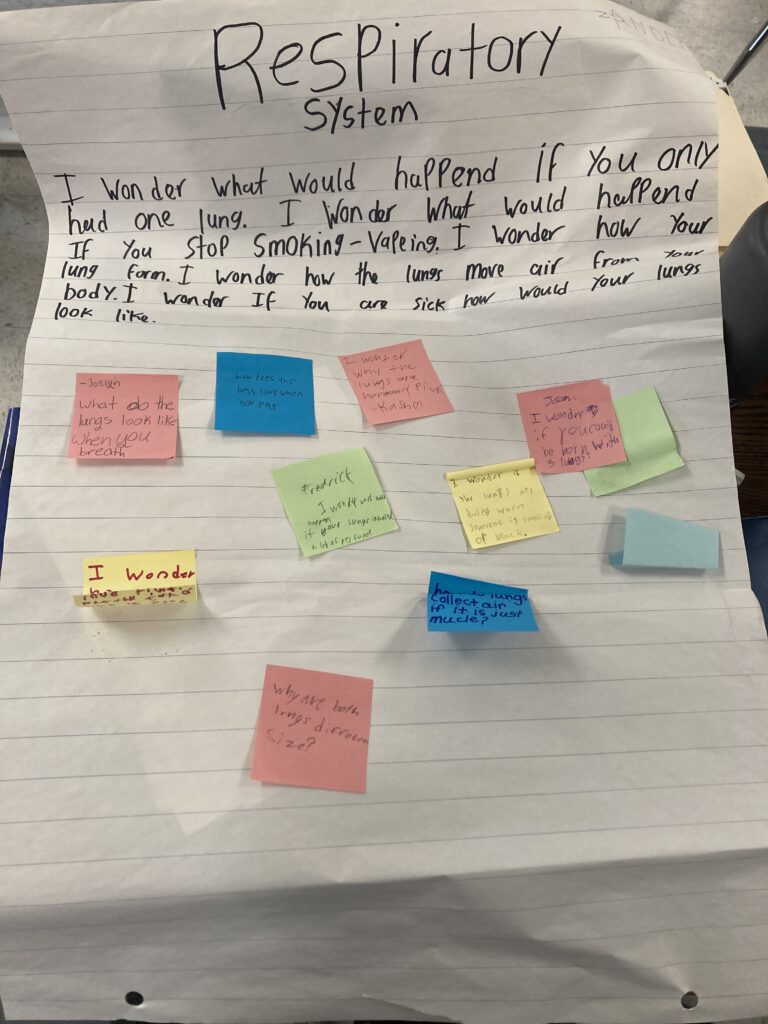

Cross Curricular Teaching – Grade 1 STEM
In this artifact, I would like to showcase my professional practice on how I teach cross curricular within science and math in a grade 1 classroom.
Connections to my teaching philosophy: In my planning, I like to always begin my focus on curriculum expectations but also bring in Dewey’s constructivism approach by learning being constructed through meaningful real-world experiences. As I plan I want to make sure my lessons are organized, adaptable, and built on student’s prior knowledge and interests to facilitate active learning.
I taught grade 1 students about measurement in math and everyday materials, objects, and structures in science. Students were tasked with a “Great Bridge Challenge” where students designed, built, and tested a bridge strong enough for the three billy goats gruff to cross over and not get eaten by the troll. During the planning process, students given the choice between their building materials (popsicle sticks or paper straws) and the fastener (clay or tape).
During the building, I realized that students were having difficultly using the clay that I purchased because it was drying out and it could not fasten their materials together. Next time, when using clay I will purchased the coloured clay as it is more moldable and does not dry out.
After students built their bridges, they tested it out by placing the three billy goats gruff onto their bridge. The goats were represented by a mini dixie cup filled with a certain amount of pennies. The small goat demonstrated the lightest weight, medium goat the light weight, and the large goat the heaviest weight. Students recorded their findings, and reflected on what they learned and what work or what did not work.
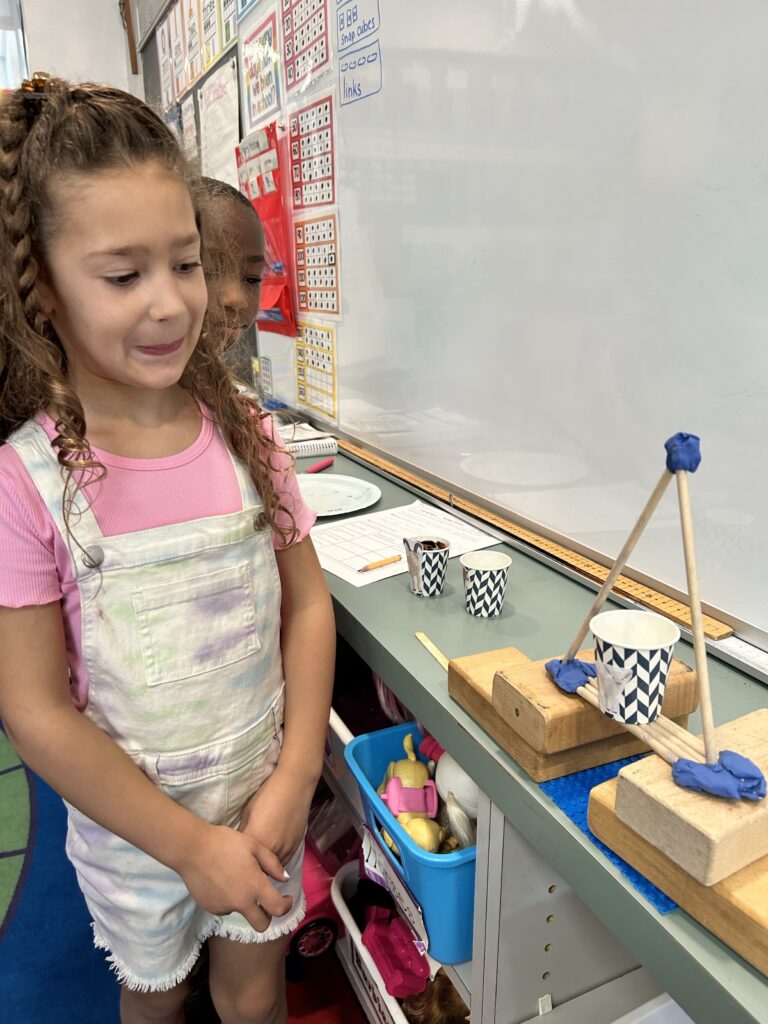
Math Learning goals: I can measure the length of my bridge by using non standardized units (snap cubes, links, or mini snap cubes). I can measure and compare mass (lightest, light, and heaviest) of the three billy goats gruff.
Science learning goals: I can identify structures (e.g. bridges) that are designed to support a load (e.g. goats). I can describe characteristics of property of materials that can make a strong bridge.
STEM learning goals: I can predict if my bridge can hold the load of the goats. I can use an engineering process to design, build, and test a bridge out of popsicles sticks, paper straws, clay, or tape. I can communicate my results.
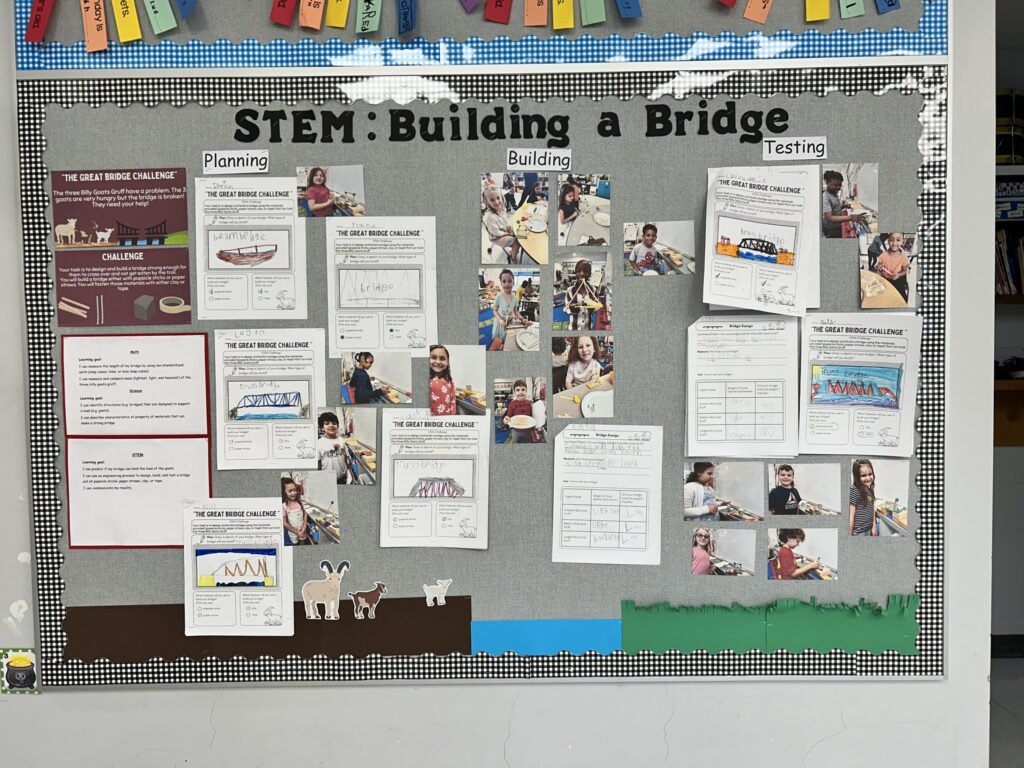
I displayed student learning on the classroom bulletin board for students to reflect on their learning.